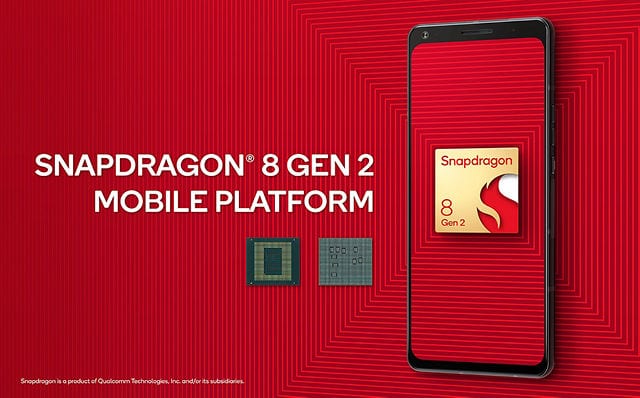An iSIM, or Integrated SIM, represents the latest step in SIM card technology. Unlike traditional physical SIM cards or the more recent eSIMs, an iSIM is embedded within a device’s processor itself. This means that phones or other devices with iSIM technology don’t need a separate SIM card slot. The integration of the SIM functionality into the System on a Chip, or SoC, allows for even smaller and more secure devices.
The move from physical SIM cards to iSIMs is significant because it enables manufacturers to create slimmer devices with more internal space. With iSIMs, the need for physical cards that can be lost or damaged is eliminated. This technology simplifies connecting devices to cellular networks and has the potential to benefit a vast array of devices, especially in the Internet of Things (IoT) market. It provides a more compact, secure, and versatile solution for connectivity.
iSIM Technology: A New Era for Mobile Connectivity
Understanding iSIM
An iSIM, short for integrated SIM, is a tiny chip embedded directly into a device’s main processor. It eliminates the need for a separate physical SIM card or even a soldered eSIM chip. This innovative technology stores the user’s mobile subscription information and allows devices to connect to cellular networks seamlessly.
How Does iSIM Differ from eSIM?
Both eSIM and iSIM offer the convenience of digital profiles and over-the-air provisioning, eliminating the need for physical SIM cards. However, the key difference lies in their form factor. While an eSIM is still a separate component soldered onto a device’s motherboard, an iSIM is integrated directly into the main system-on-chip (SoC).
Advantages of iSIM Technology
- Space-saving design: iSIMs are incredibly small, freeing up valuable space within devices. This allows manufacturers to create slimmer and more compact designs.
- Enhanced security: Integrated into the SoC’s secure enclave, iSIMs are inherently more tamper-resistant and secure than traditional SIM cards or even eSIMs.
- Simplified manufacturing: Eliminating the need for separate SIM components streamlines the manufacturing process, potentially reducing costs.
- Greater flexibility: iSIMs support multiple profiles, making it easier to switch between carriers or use different numbers for personal and professional purposes.
Potential Applications
iSIM technology has the potential to revolutionize various industries. While initially focused on smartphones, iSIMs are expected to find their way into IoT devices, wearables, and even vehicles. This technology can simplify connectivity and management for various applications, from smart homes to connected cars.
Current State and Future Outlook
Although iSIM technology is relatively new, it is gaining traction in the mobile industry. Major players like Qualcomm and Vodafone are actively developing and testing iSIM solutions. While widespread adoption may take time, the potential benefits of iSIMs make it a promising technology for the future of mobile connectivity.
Summary Table: iSIM vs. eSIM vs. Traditional SIM
| Feature | iSIM | eSIM | Traditional SIM |
|---|---|---|---|
| Form factor | Integrated in SoC | Separate chip | Physical card |
| Security | High | Medium | Low |
| Space efficiency | High | Medium | Low |
| Flexibility | High | Medium | Low |
| Cost | Potentially lower | Lower than traditional | Highest |
Key Takeaways
- iSIM technology embeds SIM functionality directly into a device’s processor.
- This allows for smaller, space-efficient devices without needing a physical SIM slot.
- iSIMs offer enhanced security and are especially promising for IoT devices.
iSIM Technology and Evolution
iSIM is a groundbreaking step in mobile technology that merges the SIM function with the device chipset, paving the way for more secure and efficient mobile devices.
Comparison with Physical and Embedded SIMs
Physical SIM cards have long been a standard in mobile devices. They fit into slots on the phone’s motherboard. Embedded SIMs, or eSIMs, are a newer technology. They take up less space because they’re soldered onto the motherboard. The iSIM goes a step further by incorporating the SIM’s functionality directly into a System-on-Chip (SoC). This integration means no need for a separate SIM card or eSIM chip, which frees up space and simplifies the design.
iSIM vs Physical SIM vs eSIM:
- Physical SIM: Separate module, requires card slot, removable
- eSIM: Soldered onto the motherboard, no physical card, less space than physical SIM
- iSIM: Built into the SoC, no separate component, maximizes space and integration
Advantages of iSIM
The merger of iSIM technology into the SoC offers several advantages. For one, it enhances security with a secure processing unit within the chip, making it tough for unauthorized users to access stored data. The elimination of the physical SIM card slot means more room for other features, like a larger battery, and a simpler manufacturing process. With these benefits, consumers enjoy greater convenience and flexibility, while manufacturers benefit from a streamlined design.
Key Advantages of iSIM:
- Security: Uses secure enclave technology for enhanced protection
- Space: Saves space inside devices for other components
- Manufacturing: Simplifies the device’s internal architecture
Industry Adoption and Manufacturers
Big names in the tech industry like Qualcomm, Thales, Apple, and Samsung are exploring iSIM technology. The Qualcomm Snapdragon 8 Gen 2 chip is among the first to support iSIM, establishing a precedent for others to follow. The Global System for Mobile Communications Association (GSMA) also supports this evolution, which suggests that carriers and manufacturers worldwide will likely adopt the iSIM broadly in upcoming devices. This adoption marks a significant transition in how devices will connect to mobile networks in the future, with an emphasis on enhanced functionality and optimized design.
Manufacturers and Stakeholders in iSIM Adoption:
- Qualcomm: Introduced Snapdragon 8 Gen 2 with iSIM support
- Apple & Samsung: Major smartphone manufacturers exploring iSIM
- GSMA: Provides guidelines and support for global adoption







